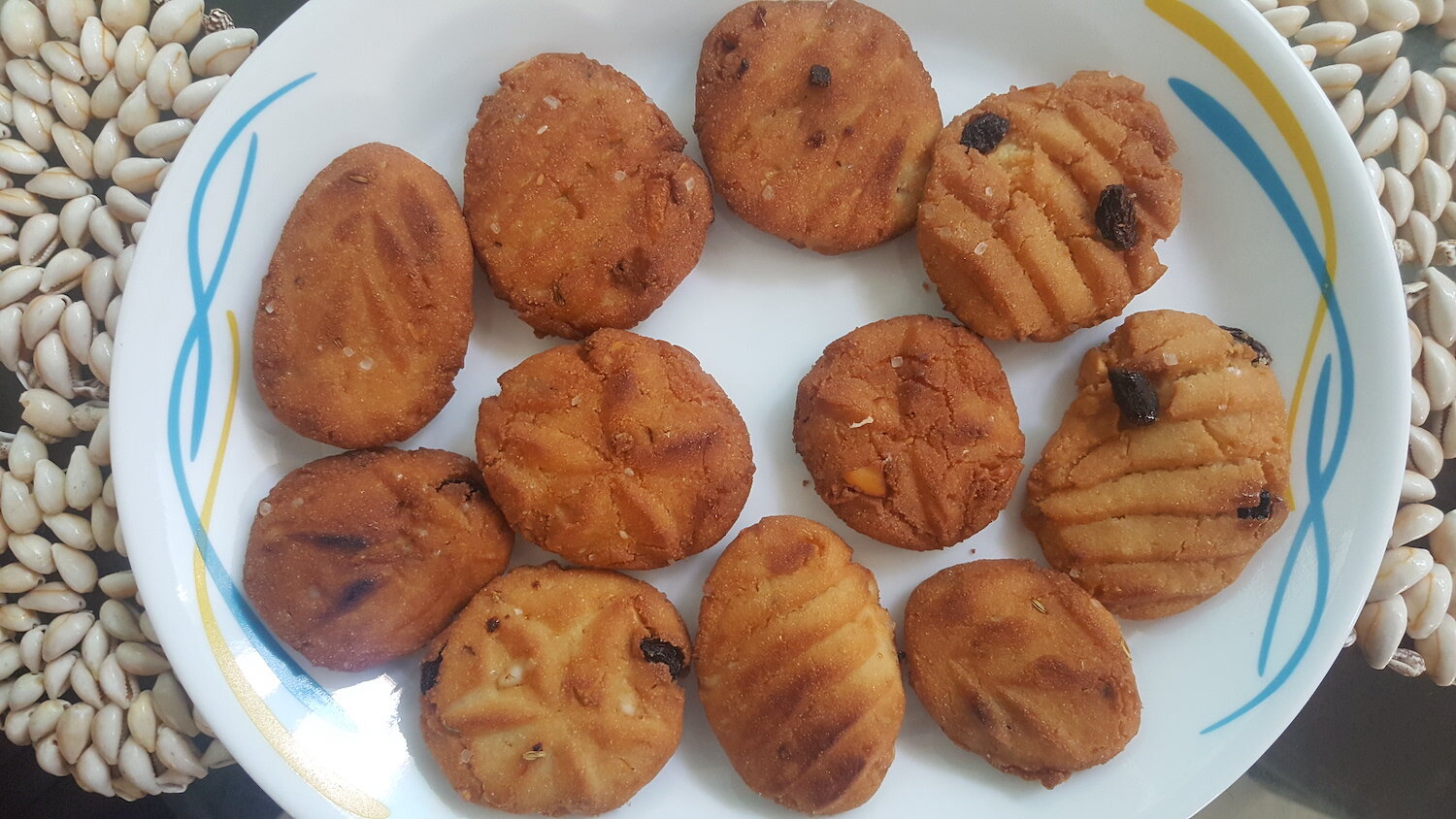Thekua, A Deep-Fried Bihari Cookie Prasad

A Bihari favourite, thekua is an important part of the festivities of Chhat.
In Bihar, the festival of Chhat is celebrated to worship the Sun — the single source of sustenance of all life. After celebrations, I am usually inundated with questions, and requests to learn about thekua.
Thekua is a sweetmeat, prepared as an offering to the Sun God on Chhat. The reason that thekua is preferred as prasad is because it is made of healthy ingredients like wheat flour, jaggery and dry fruits, and it lasts for rather long durations. People revere the Chhat prasad, and a few years ago, it was quite commonplace for people away from home to receive thekuas as prasad by registered post, even a month after festivities. Now, with Speed Post and courier services, this has become much more accessible. But this cookie-like sweet is made regularly on other occasions too, served as a beloved evening snack. In fact, most students from Bihar return to hostels with a tuck box filled with thekua and nimki (only to find them disappearing quickly among friends!)
The word thekua, comes from the verb ‘thokna’ literally meaning ‘to hammer’. The process of making this cookie involves pressing the dough hard against a wooden mould. Named for this motion (thoka hua), the original word for this dish was thokua, which then transformed to thekua. Thekua moulds are easily found in the Bihar markets.
Before I share this recipe for khasta thekua with you, I have some to make some disclaimers: Purists will tell you that this isn’t the real thekua. They are correct. The actual thekua is made of wheat flour and jaggery. However as a personal preference I find that version too dense. I like my thekuas crunchier and crispier. So this is a modification based on my mother’s recipe. It uses maida (refined flour) rather than whole wheat flour, and to lend a crunch, she adds semolina (sooji). She calls it khajur, as people also use the term khajuria for thekua. I find this simpler to make – true, it might not last as long as the wheat flour thekuas do, but shelf life has never been an issue, as the thekua disappear as quickly as you make them!
Recipe: Thekua
Ingredients
2 cups flour or maida
1 cup semolina or sooji
1 cup powdered sugar
¼ cup ghee
2 tsp fennel seeds or saunf
50 g cashew nuts, chopped fine
15-20 raisins
2-inch piece of coconut flesh, chopped fine
½ cup milk
2 cup oil for deep frying
Method
Mix all ingredients (except milk and refined oil) together.
Add in the milk a little at a time, to form a hard dough. The dough shouldn’t be soft or kneaded too much, but come together to shape easily.
Make small balls of equal size. Depending on the pattern on the moulds, you can make elongated cylinders or round balls.
Grease the thekua moulds with a bit of oil and oil your palms, as well.
Place each ball on a thekua mould and press hard with the ball of your palm. The thekua must be evenly thick on all sides.
Now, remove from mould and set aside. If you don’t have moulds, you can use any firm patterned surface to get an embossed design on the surface.
Heat oil in a heavy-bottomed kadhai. Keep the heat must be on low to medium, or the centre of the thekuas will remain uncooked.
Slide in 2-3 thekuas into the hot oil, and fry in batches. Resist touching until one side turns golden brown. Then, flip them over gently. Avoid over-handling as they are fragile.
When they turn golden on both sides, place on a kitchen paper to drain excess oil.
Once cool, the thekua become firm and crisp, and is read to be served.
I know some people prefer to bake rather than fry them. If you choose to do that, remember to tweak the recipe and add some baking powder.
Dr Anshu is a pathologist and medical teacher. She works as Professor of Pathology at the Mahatma Gandhi Institute of Medical Sciences at Sevagram in Maharashtra. Writing is her passion and she blogs here.
ALSO ON THE GOYA JOURNAL











